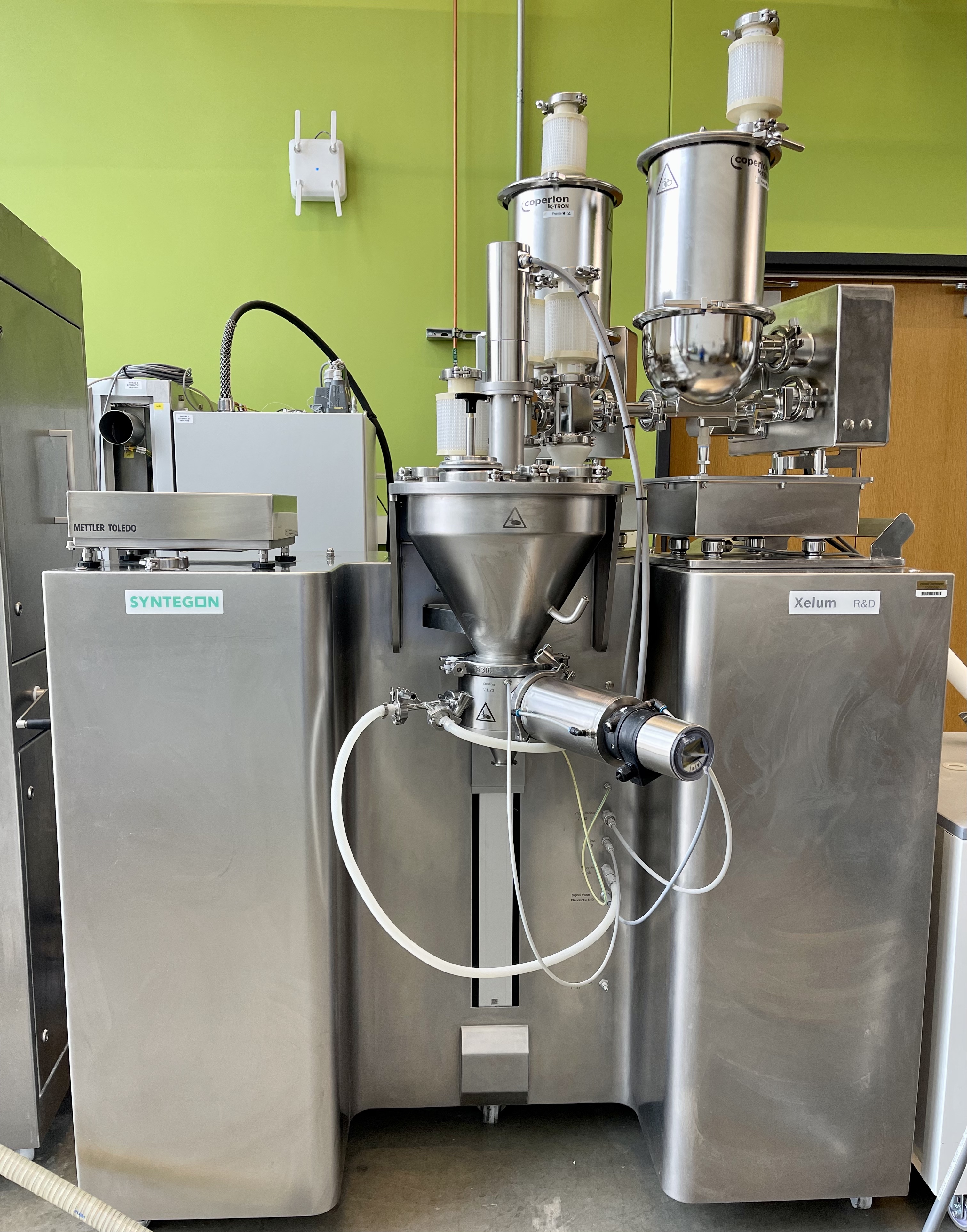(411c) Impact of Excipient Properties & Blending Process Parameter on Blend Uniformity of a Blend Prepared in Small Batches Semicontinuously Using Integrated Feeder-Blender System
AIChE Annual Meeting
2022
2022 Annual Meeting
Pharmaceutical Discovery, Development and Manufacturing Forum
Integrated Product and Process Design with Pharmaceutical Applications II
Tuesday, November 15, 2022 - 4:12pm to 4:33pm
The manufacturing process can be in a batch, continuous or semi-continuous mode of manufacturing Previous work talks about the comparison of batch and continuous blending and the benefits and issues associated with both23. Another approach can be to prepare a series of small batches. Output from these small batches can be delivered downstream to both batch or continuous modes and have the flexibility of customizing the batch sizes. It can feed the blended material to downstream semicontinuous unit operations such as fluidized bed granulators and dryers. Such an approach has the added benefit of having relatively easier scaleup and flexibility in batch size as it can be varied by changing the number of small batches. The feeding-blending operation is the major source of variance in the final product quality in continuous manufacturing4. The pharmaceutical industry is constantly innovating5 and researchers are looking for improved, robust and effective integrated feeding blending solutions.
The present study aims to use an integrated feeder blender system by Syntegon to provide output as a series of small batches semi-continuously. The Xelum R&D feeder blender module from Syntegon is operated by one to five gravimetric feeders for dosing different powder materials into the conical blender. The blender then mixes the ingredients as per the set recipe and operating parameters. The output of the integrated feeder blender system is then unloaded in small batches. The blend uniformity of the unloaded material is checked using a UV visible spectrophotometer6. Batch to batch variation and within batch variations using such a system will then be analyzed. Blender operating parameters such as blending time, stirrer rotation speed (rotation per minute (RPM)) and fill level will be varied based on a DOE design. The research will also investigate the impact of material properties of the ingredients such as particle shape, particle size, density and flow properties on the blend uniformity of the API in the powder mixture. This work showcases the combining of the two most common unit operations and providing the output that could be used for both batch and continuous modes. Such an integrated process can eliminate the use of manual feeding and long batch blend times. Also, this setup provides the option to have a wide range of residence time that may be needed to blend very few to many ingredients in one step. The current study investigates the performance of blending of the integrated feeder blender system and its usage as an alternative to batch blending in rotary blenders and continuous blending in tubular blenders.
Reference:
- Cullen PJ, Romañach RJ, Abatzoglou N, Rielly CD. Pharmaceutical Blending and Mixing.; 2012. doi:10.1002/9781118682692
- Jaspers M, de Wit MTW, Kulkarni SS, et al. Impact of excipients on batch and continuous powder blending. Powder Technol. 2021;384:195-199. doi:10.1016/j.powtec.2021.02.014
- Alyami H, Dahmash E, Bowen J, Mohammed AR. An investigation into the effects of excipient particle size, blending techniques & processing parameters on the homogeneity & content uniformity of a blend containing low-dose model drug. PLoS One. 2017;12(6):1-19. doi:10.1371/journal.pone.0178772
- Zoltan K. Nagy, Arwa. El Hagrasy JL. Continuous Pharmaceutical Processing. 1st Editio. Cham : Springer International Publishing : Imprint: Springer; 2020.
- Rogers A, Ierapetritou M. Challenges and opportunities in modeling pharmaceutical manufacturing processes. Comput Chem Eng. 2015;81:32-39. doi:10.1016/j.compchemeng.2015.03.018
- Al-obaidi ZMJ, Ebrahim AA, Ani A, Al-juhaishi AMR, Hussein AN. A comparative study for the quantification of paracetamol in multicomponent oral solution employing standard addition method utilized in UV-Visible spectroscopy and RP-HPLC. J Pharm Sci Res. 2019;11(2):339-342.

